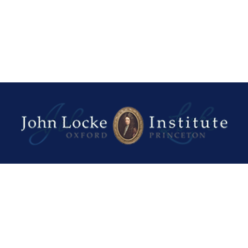约翰洛克写作竞赛是由英国牛津独立教育组织约翰洛克研究所与美国普林斯顿大学等院校教授合作组织的学术项目。往届优胜者遍布众多世界名校,如哈佛、耶鲁、普林斯顿等。约翰洛克写作竞赛被誉为人文社科领域中含金量最高的国际论文比赛之一。
需要填写的信息包含:
姓名;备用电子邮箱;出生日期;性别;联系电话的国际代码;联系电话;国籍;地址;国家;家长/监护人姓名、家长/监护人邮箱;第二位家长/监护人姓名、家长/监护人邮箱;学校名称;学校地址;学校所在国家;你是如何了解John Locke竞赛等信息。
某些信息栏右侧带有向下的箭头,可以点击该箭头,在下拉菜单中选择对应内容。
注意:
在填写姓名的时候,需要和自己的身份证件上的名字保持一致(First Name指的是名字,Last Name指的是姓氏)。
填写联系电话时,不用再在前边加86了,直接写联系电话即可。
填写地址的时,地址栏1、地址栏2,英文填写地址的时候,是从小单位到大单位进行填写的,先写门牌号、小区,再写街道、区等。
填写“School Country”时,是学生现就读学校所在国家,而不是学校所属国家。
注:2024John Locke注册通道已开启,在报名及提交时遇到任何问题,均可扫描文末二维码添加顾问老师咨询。
John Locke写作竞赛有何魅力?
权威背书与广泛认可:
John Locke竞赛由英国牛津的John Locke Institute主办,与牛津大学、普林斯顿大学等世界顶级名校合作。评审团全部来自牛津大学,这为竞赛赋予了极高的权威性和国际认可度,获奖经历对学生的学术简历具有显著的加分作用。
人文社科全领域覆盖:
竞赛涵盖了哲学、政治、经济学、历史、心理学、法学、神学与伦理学等七大人文社科领域,为参赛者提供了广阔的知识探索空间。这种跨学科设置不仅考验学生的专业知识,更鼓励他们运用批判性思维、逻辑分析和创造性观点,对复杂议题进行深度探讨。
独立完成论文写作:
竞赛要求参赛者围绕给定主题进行独立研究,撰写严谨的学术论文。这种模式强调自主学习、深度思考与学术写作能力的培养,对于提升学生的独立研究能力和学术素养具有深远影响。
年龄分组与公平竞争:
竞赛按年龄分为低年级组和高年级组,确保不同年龄段的学生能在公平的环境中同台竞技,展示各自年龄段的最高学术水平。这种分组方式保证了竞争的公平性和学生的参与度,使得比赛更具有包容性和多样性。
计划参赛的同学,可扫码预约一对一破题指导!









